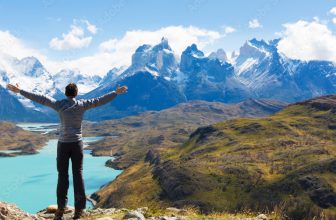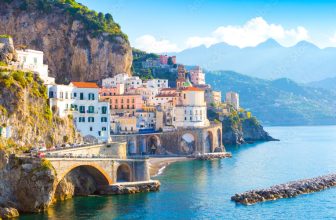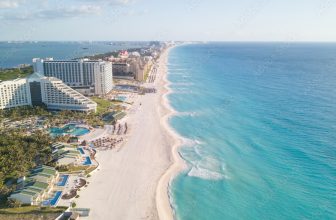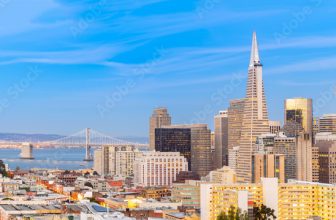
The tiny island nation of Saint Lucia is nestled in the Lesser Antilles. This Eastern Caribbean paradise has everything: volcanic beaches, dramatic tapered mountains, reef-diving sites, and luxury resorts. It also has beautiful fishing villages, as well as rainforest trails and waterfalls. In Toraille, a 15m waterfall pours over a cliff into a garden. Castries, the capital, is a major cruise port.
St. Lucia is a small island in the Lesser Antilles
The economic structure of St. Lucia is primarily agricultural. Bananas are the main crop, and the island is considered the world’s smallest banana producer. The island is also a major tourist destination, attracting visitors from both North America and Western Europe. Other sectors include tourism and manufacturing. In 2003, the island exported goods worth EUR44 million to the European Union, while its imports accounted for only a small portion of the island’s total export revenue.
The government of Saint Lucia is a parliamentary system modeled on that of the United Kingdom. The head of state, or governor-general, is appointed by the Queen and exercises ceremonial functions. The governor-general has residual powers and may use them at his discretion. The prime minister and cabinet represent the majority of the country, and they are answerable to the governor-general.
Among the islands of the Lesser Antilles, St. Lucia is the second-largest Windward Island. It shares maritime borders with Martinique and Barbados. The island is volcanic, with Mt. Gimie rising nearly 950 meters above sea level. Other notable mountains include Gros Piton, which stands 2,619 feet above sea level, and Petit Piton, at 798 m. The volcanic terrain is also the source of sulfur fumaroles. The island is divided into 11 districts.
It gained independence from the UK on 22 February 1979
The island of Saint Lucia gained its independence from the UK on 22 February 1979. The island has been fought over by many nations over the years, but it ultimately became independent in 1979. The island was founded by the French in the mid-17th century and was soon colonized by the British. The first post-independence elections were held in July 1979, and the Labour Party was elected to power. The first Prime Minister was John Compton, and the first Governor-General was Sir Allen Montgomery Lewis.
The SLP’s attempt to establish a mixed economy failed to address the problems facing the new country. The country suffered from the impact of Hurricane Allen, which destroyed the banana crop in 1980. In addition, rivalry within the SLP led to the resignation of two prime ministers in two years. The country also suffered from a drop in tourist trade to pre-independence levels. In 1987, the UWP was elected on a platform of inviting foreign investment and decentralizing government administration. The UWP retained power in 1987 and 1992.
It is a member of the Commonwealth
The Secretary-General of the Commonwealth delivers a biennial report that summarizes the activities of the organisation in the previous two years. The biennial report is published online, and the 2018 report is presented with a companion website. Previously, the Secretary-General produced a report that was presented annually to the heads of government. The IALS Library has a collection of these reports dating back to 1977. It is also possible to access the reports from 1965/66 to 2005, which can be found on the Commonwealth’s website.
In 1951, the Commonwealth ratified its charter, which included laudable aspirations for development and tolerance. By joining the Commonwealth, a country signals to the international community that its governments share these ideals. But the Commonwealth has also been used by repressive regimes to conceal their failures and to mask their actions. In 2013, the Commonwealth hosted a summit hosted by Sri Lanka’s Mahinda Rajapaksa. His government was under fire for committing war crimes in Sri Lanka. Rajapaksa hoped that the summit would divert attention from the accusations against his government.
The membership of the Commonwealth increased dramatically in the post-World War II era, as former dependent states gained their independence. Many of these newly independent states chose to be members of the Commonwealth instead of choosing the British monarchy as their head of state. In fact, the first non-British member to join the Commonwealth was Mozambique. The second country to join the Commonwealth, Rwanda, was not originally a part of the British Empire, and was only admitted in 2009.
It is a paradise of gastronomy
If you are a foodie, St. Lucia has you covered. With the abundance of local produce and ingredients, St. Lucia has a thriving culinary scene. The island’s cocoa industry is an excellent example of the quality of its produce. From fresh beans to dried ones, the island offers an exceptional taste. You can taste a difference between the local and international flavors.
A traditional local dish is the green fig and saltfish. This fish was plentiful during slavery, and slave owners would buy it in bulk. It is available dried and is served with boiled green bananas, cabbage, and cucumber salad. Saltfish is also stewed with garlic, peppers, and fresh green herbs, making the dish a truly unique treat. Throughout St. Lucia, you will be rewarded for your adventurous spirit and for discovering the island’s gastronomy.
In addition to the seafood and vegetables, St. Lucia’s cuisine also combines international and local flavors. Chargrilled red snapper and buttery crabmeat stuffed in a crab shell are some of the island’s most popular dishes, while local specialties like a crab back are equally delicious. While sampling the local delicacies, don’t miss the local lager, Piton beer.
It is home to dolphins, whales and sea turtles
Cetaceans are common in St. Lucian waters. Sightings of dolphins can range from two to three miles offshore. Sperm whales and false killer whales are sometimes seen between three and twenty miles off the island. You may also spot humpback and Bryde’s whales. These mammals are large and can weigh up to 45 tons. You can see them swimming or in the water on a half-day boat trip.
In St. Lucia, you can also view these marine animals. The government has banned hunting of these creatures for the moment, but the sport of turtle watching must be developed into an industry for economic and social benefit. In addition to whales, St. Lucia is home to endangered leatherback turtles and rare parrots. There are also many opportunities for birdwatching and observing these creatures in the wild.
While on land, you may spot some local animals such as the St. Lucian Parrot. There are five native parrot species on St. Lucia. There are also 157 species of birds, including three hummingbirds. Dolphins, whales, and sea turtles are common throughout the island. And you might even see a dolphin or two swimming around.
It is a haven for adventurers
Whether you’re a seasoned explorer or an avid adrenaline junkie, St. Lucia is the perfect place for you. This beautiful island offers a variety of outdoor activities, from zip-lining to exploring the lush rainforest and mud baths. There’s also a great diving scene on the west side, which is a favorite among sports fans from around the world. Visitors can learn the rules of the sport and try it for themselves.
The first thing you should do when visiting St. Lucia is explore its rainforest. This beautiful area is home to more than 80 plant species and five endemic reptiles. You can rent a water taxi or go on a guided tour. Then, head to the beaches and soak up the natural beauty. There’s no shortage of places to relax on the island. Those who like to explore nature will appreciate the Reduit Beach, a white-sand beach that’s perfect for swimming. Or, you can visit Rodney Bay and experience the calm, clear waters of Soufriere. If you’d prefer to stay closer to the beach, you can visit the Toraille Waterfall, which sits near Soufriere.
St. Lucia is also an ideal destination for outdoor activities. The island’s rainforest offers a variety of activities for adventurous travelers, including zip-lining and hiking. Zip-lining in the rainforest is especially exciting, since it gives you a bird’s-eye view of the island’s capital city. Unlike in most Caribbean destinations, zip-lining in St. Lucia is safe and easy to do, and a permit is required to take part.






